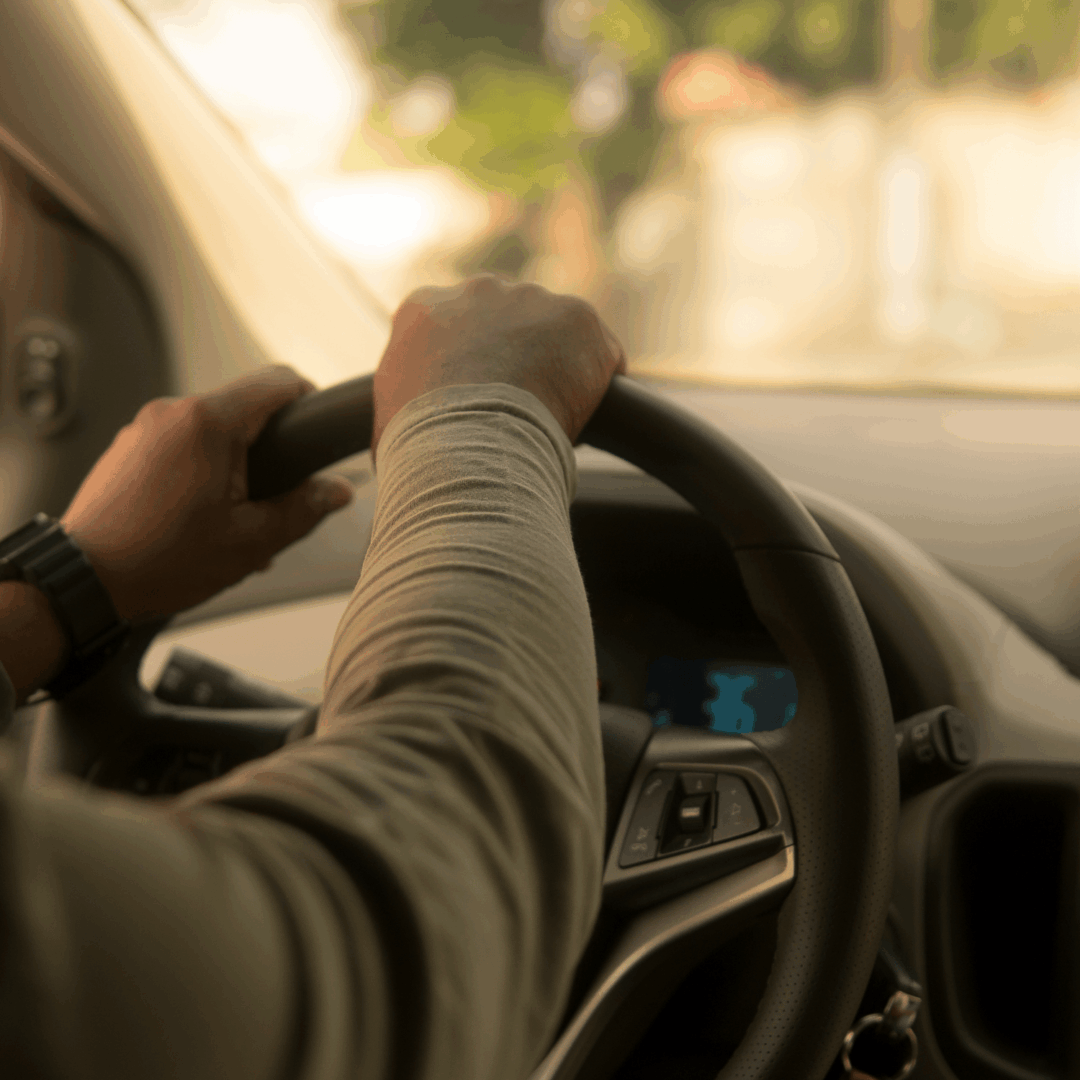Grafton Traumatic Brain Injury Lawyers
A traumatic brain injury can change a Grafton family’s life in an instant. Whether the injury happens on U.S. Route 50, Route 119, a neighborhood street, or at a workplace or home, the physical, emotional, and financial impact can be overwhelming. Survivors may face headaches that do not subside, memory lapses that complicate work and school, mood changes that strain relationships, and medical bills that grow month after month. Families suddenly become care coordinators, advocates, and financial planners while trying to help a loved one heal. The Centers for Disease Control and Prevention (CDC) calls TBI a major cause of death and disability in the United States, emphasizing how wide-ranging and long-lasting these injuries can be.
What Is a Traumatic Brain Injury and Why Immediate Care Matters
A traumatic brain injury occurs when a bump, blow, or jolt to the head or a penetrating injury disrupts how the brain works. Even a so-called “mild” TBI (concussion) can lead to weeks or months of headaches, dizziness, and difficulty concentrating, and a fraction of patients develop persistent post-concussive symptoms that interfere with everyday life. Moderate to severe TBIs can involve bleeding, swelling, or loss of consciousness, and they often require urgent imaging and hospital care. Early medical attention documents symptoms, rules out dangerous complications, and sets a treatment plan that supports both recovery and any future legal claim. Current federal guidance underscores that TBIs affect people of all ages and remain a leading cause of serious injury nationwide.
Mild, Moderate, and Severe TBIs: How Doctors Classify Brain Injuries
Clinicians typically use clinical signs (such as loss of consciousness and confusion), neurological exams, and imaging to categorize TBI severity. Mild TBI or concussion may involve no loss of consciousness at all and still cause significant symptoms, especially with repeat injuries. Moderate TBI often means longer loss of consciousness or more serious imaging findings, with a higher risk of lasting cognitive or physical deficits. Severe TBI can involve coma, extensive bleeding, skull fractures, or diffuse axonal injury, and survivors frequently need long-term rehabilitation. Federal public health summaries explain these categories and stress that each requires different monitoring, treatment.
Anatomical Patterns of Injury You May Hear About
After crashes or falls, doctors may diagnose subdural hematomas, contusions, diffuse axonal injury, or skull fractures. Subdural hematomas blood collecting on the brain’s surface are especially common in older adults and in people on blood thinners, and they can be life-threatening even after seemingly minor trauma. Diffuse axonal injury results from the brain moving rapidly within the skull, tearing microscopic nerve fibers, and often causing prolonged unconsciousness. Contusions are bruises to brain tissue and can appear under the impact site or on the opposite side of the brain from a rebound effect. The NIH resources explain these patterns and why imaging and close observation are so important in the early days after trauma.
Common Ways TBIs Happen in and Around Grafton
In Grafton and across Taylor County, TBIs most often arise from motor-vehicle collisions, falls (especially among older adults), workplace incidents, and sports or recreational activities. A rear-end crash can cause the brain to move inside the skull, leading to a concussion without any visible head injury. A fall on stairs or ice can trigger a subdural hematoma that worsens over hours to days, which is why a new headache or confusion after a fall should be taken seriously. Construction or industrial incidents may involve falls from height or being struck by objects, both with high risk for brain injury. Federal and state public-health materials consistently emphasize that children and older adults are at elevated risk and benefit from early evaluation and support.
Signs and Symptoms to Watch For After a Crash or Fall
If you or a loved one has hit the head or if the body was violently jolted, pay attention to the hours and days that follow. Warning signs include headaches that worsen, nausea or vomiting, dizziness, sensitivity to light or noise, and difficulty concentrating or remembering. Loved ones may notice mood swings, irritability, slowed thinking, or changes in sleep. In moderate to severe cases, there can be seizures, slurred speech, weakness, or a decline in alertness, which requires emergency care. Public-health guidance stresses that symptoms can evolve; people sometimes feel “fine” at first and worsen later, which is why documentation and follow-up matter.
Physical Symptoms You Should Not Ignore
Headaches that intensify, neck pain after a whiplash-type motion, balance problems, and visual disturbances deserve medical attention. Fatigue can be profound, and routine tasks grocery shopping, taking a shower, or even reading, may suddenly feel exhausting. Noise in a classroom or workplace can trigger headaches or brain fog, and bright lights can feel unbearable, which often leads people to avoid activities they used to enjoy. Some patients develop sleep disruption or changes in appetite that further slow healing.
Cognitive Changes That Affect Work and School
After TBI, many people describe “brain fog,” slowed processing speed, forgetfulness, or trouble focusing for more than short stretches. Complex tasks like multitasking, planning a route, or managing finances can feel overwhelming. Students may struggle to keep up with reading loads, note-taking, and test performance, even if they look “normal” on the outside. Adults may excel at familiar tasks yet struggle to learn new procedures or meet productivity quotas, which can jeopardize employment without accommodations. These cognitive effects are widely recognized in federal clinical summaries and should be documented for both medical and legal planning.
Emotional and Behavioral Health After TBI, Including PTSD
Irritability, depression, anxiety, and emotional lability are common, and they can persist even when scans look normal. Some survivors develop post-traumatic stress disorder after a violent crash or frightening hospitalization, with intrusive memories, avoidance of driving, and hypervigilance. The U.S. Department of Veterans Affairs’ National Center for PTSD recognizes serious car accidents as a potential trigger for PTSD, and recommends professional care when symptoms interfere with daily life. Families should watch for personality changes or social withdrawal, which are injury effects rather than “attitude” and deserve compassionate treatment. Integrating mental-health care into the rehabilitation plan reduces suffering and strengthens overall recovery.
Children, Adults, and Older Adults: Why Age Changes Everything
Age shapes how brain injuries present and how recovery unfolds. Children’s brains are developing, so injuries can affect learning, behavior, and social skills over time, sometimes in ways that do not show up immediately. Adults grapple with work, parenting, and financial responsibilities that are hard to balance with cognitive and physical limitations. Older adults are more vulnerable to bleeding and complications and may be misdiagnosed with age-related memory disorders when the true issue is a recent injury. Planning must reflect these differences so treatment, school or work accommodations, and compensation cover what each stage of life demands. NIH and CDC materials highlight these age-specific risks and needs.
Pediatric TBI: School, Sports, and Development Over Time
Children with TBIs may appear to “bounce back,” but parents and teachers often notice new struggles with attention, reading, or emotional regulation as academic demands increase. Symptoms can emerge days or weeks later, which is why monitoring and communication with pediatricians and schools is critical. Concussion management typically includes rest and a gradual return to schoolwork and sports, guided by providers who understand pediatric recovery. Families should request school accommodations such as reduced workload, extra time on tests, or temporary breaks for headaches or light sensitivity. Federal public-health guidance provides age-appropriate education materials for clinicians and families to support safer returns to learning and play.
When Your Child Needs School Supports and Activity Limits
If headaches, sensitivity to noise, or difficulty concentrating persist, a written plan helps teachers tailor expectations without penalizing your child. Parents can request adjustments like shorter assignments, quiet testing areas, or modified schedules until symptoms improve. Sports should resume only after medical clearance and a stepwise progression that stops at any sign of symptom flare. Keep a log of symptoms, triggers, and progress to share at follow-ups, which strengthens both medical care and any future claim.
Adults With TBI: Work, Family, and Financial Pressure
Adults often carry mortgages, childcare, and careers that cannot simply pause for recovery. Brain fog and fatigue reduce productivity and missed days, or lower performance may risk job security without formal accommodations. Vocational rehabilitation and neuropsychological evaluations can document limitations and guide realistic return-to-work plans. Couples and caregivers also need support, as invisible symptoms like irritability or forgetfulness can strain relationships. National Institutes of Health (NIH) summaries note that millions of Americans live with long-term TBI-related disability, underscoring the need for sustained medical and legal planning.
Older Adults: Higher Risk for Bleeding and Slower Recovery
For older adults, even a short fall can lead to subdural hematoma or worsening confusion over hours to days, particularly when blood thinners are involved. Symptoms sleepiness, imbalance, or memory lapses are sometimes mistaken for dementia rather than recognized as new injury. Early scans, repeat imaging when symptoms progress, and careful medication review can save lives. Families should ask clinicians specifically about delayed bleeds, which can be subtle yet dangerous
Preventing Repeat Falls and Planning Safe Discharge
Before discharge, ask for a fall-risk assessment and home-safety review, including lighting, railings, and bathroom modifications. A physical therapist can teach balance exercises and safe mobility strategies, while an occupational therapist can suggest tools that reduce strain during daily tasks. If stairs are unavoidable, explore temporary bedroom relocation and bedside commodes while strength returns. Follow-up should include a medication reconciliation, because certain drugs increase dizziness or bleeding risk. Public resources for home safety and aging-in-place can guide families through practical, affordable changes.
Pre-Existing Conditions and Recent Surgeries: When a New Crash Sets Back Healing
A car crash that occurs while you are recovering from spine surgery, joint replacement, or a prior concussion can complicate and prolong healing. Physicians must balance rehabilitation plans for the older injury with new restrictions for the TBI, which can double or triple timelines and costs. Symptoms may overlap such as dizziness from both medication and concussion, so careful documentation helps sort out causes and treatment. From a legal standpoint, the at-fault party is responsible for the full impact of the crash on a vulnerable patient, a principle sometimes called the “eggshell plaintiff” rule. Detailed records from before and after the incident help prove how the collision aggravated pre-existing conditions and increased medical and economic losses.
Coordinating Care When Conditions Overlap
Ask your doctors to communicate across specialties so restrictions, medications, and therapy goals do not conflict. A single, unified plan often captured in a “care conference” note prevents gaps and minimizes duplication of services. Keep a binder with pre-accident records, imaging, surgery notes, and all post-accident documentation to show what changed and when. Neuropsychological testing can capture cognitive effects while physical therapy measures strength, balance, and functional limits. This thorough record helps your care team and strengthens your case for full compensation that reflects both old and new realities.
Diagnosis and Treatment: What to Expect from Day One Through Rehab
After head trauma, emergency clinicians evaluate airway, breathing, circulation, and neurological status, then order imaging when indicated. CT scans can quickly detect bleeding or skull fractures, while MRI is more sensitive for diffuse axonal injury and subtle lesions. Cognitive screening and serial exams track improvement or deterioration, guiding decisions about observation or admission. For moderate to severe TBI, treatment may include managing brain swelling, surgery to evacuate hematomas, and close ICU monitoring. Federal clinical resources outline these steps and emphasize how timely diagnosis and rehabilitation drive better outcomes.
Rehabilitation: Physical, Occupational, Speech, and Cognitive Therapy
Rehab begins as soon as it is safe, often in the hospital, and continues at inpatient or outpatient facilities. Physical therapy addresses balance, gait, and endurance; occupational therapy focuses on daily living skills and safe home routines; speech-language therapy treats speech, swallowing, and cognitive-communication problems. Neuropsychologists assess attention, memory, and executive function, then design compensatory strategies for work or school. Many survivors need months or years of structured therapy, and some require intermittent “tune-ups” when life demands change. National education sites summarize these disciplines and why a coordinated, team-based approach is essential.
The Long View: Why Moderate to Severe TBI Is a Lifelong Condition
Even with excellent acute care and rehab, many survivors experience chronic symptoms. CDC research shows that about half of people hospitalized for moderate to severe TBI die or experience further decline within five years, reflecting the injury’s long reach into health, independence, and employment. Long-term planning should include periodic neurological and neuropsychological reassessment, mental-health care, and proactive management of headaches, seizures, and sleep disorders. Families benefit from education about triggers that worsen symptoms, such as stress or sensory overload, and from building routines that conserve energy. Recognizing the condition as lifelong helps secure durable medical equipment, home supports, and long-term services as needed.
Returning to Work or School: Documentation and Accommodations
A graded return, shorter shifts or class periods, built-in breaks, and reduced multitasking help prevent setbacks. Neuropsychological evaluations provide objective data on attention, processing speed, and memory, which employers and schools can use to tailor expectations. Documenting job functions and classroom demands allows therapists to target high-impact skills. Keep copies of all accommodation letters and symptom logs; this paper trail is valuable for benefit claims and any litigation. Re-evaluation after several months can update recommendations as stamina improves or new challenges emerge.
Home and Vehicle Modifications That Preserve Independence
Small changes can make daily life safer and less exhausting: better lighting, grab bars, non-slip flooring, labeled storage, and simplified layouts reduce cognitive and physical strain. For mobility limits, ramps, wider doorways, roll-in showers, and adjustable counters may be appropriate, and vehicle hand controls can restore driving for some. Federal resources explain “reasonable modifications” in housing and provide practical guides for home modifications and funding partnerships for aging and disability services.
West Virginia families can also explore state-specific brain injury programs for assistive technology or home and community-based services.
Your Legal Rights After a TBI in West Virginia
When someone else’s negligence causes a brain injury, whether a distracted driver, unsafe property, or a hazardous work zone, you have the right to pursue compensation. Proving a TBI case requires medical evidence that connects the crash or fall to the symptoms you are experiencing today and will likely experience tomorrow. It also requires a clear calculation of economic and non-economic losses, so an insurer or jury understands the full impact. Experienced legal teams gather records, consult experts, and present evidence that explains complex medicine in plain English. The goal is to protect your health, your future, and your family’s stability.
Comparative Fault: How Shared Responsibility Affects Compensation
West Virginia follows a modified comparative fault rule. If you are partly at fault, your compensation is reduced by your percentage of fault, and recovery is barred if you are more than 50 percent responsible. This makes early investigation crucial to counter inaccurate assumptions about how the crash happened, particularly in cases with poor documentation. The governing statute, West Virginia Code §55-7-13a, defines comparative fault and ties damage determinations to the share of responsibility. Understanding this rule helps set realistic expectations and informs negotiation strategy from the start.
What Damages Can Include in a TBI Case
Economic damages typically cover emergency care, hospital stays, imaging and surgeries, specialist visits, therapy, medications, mobility aids, and lost wages. For many survivors, the largest economic item is future care: attendant care, home-health services, periodic therapy, and long-term equipment replacement. Non-economic damages compensate for pain, suffering, mental anguish, and loss of enjoyment of life, the birthdays missed, the hobbies abandoned, the strain on close relationships. In rare cases involving reckless or egregious conduct, punitive damages may be available to punish and deter. A well-documented life-care plan and expert testimony make these numbers tangible.
How Lawyers Prove TBI Cases: Evidence That Moves Insurers and Juries
Strong cases are built on details: ambulance and emergency-department records, imaging, treating-physician narratives, neuropsychological testing, therapy progress notes, and daily symptom journals. Photos of visible injuries and of durable medical equipment, plus statements from family and coworkers, show how life has changed. When liability is disputed, crash-reconstruction experts analyze vehicle damage, scene measurements, and available video to explain the cause. Economists quantify future earning losses, and vocational experts testify about the jobs a survivor can realistically perform. This integrated picture gives insurers and jurors what they need to understand the full impact.
Investigating a TBI Case in Grafton: What Happens Behind the Scenes
A thorough investigation preserves evidence that fades quickly: skid marks, debris patterns, weather and lighting conditions, and business-camera footage that may overwrite within days. Your legal team obtains the full police report and dispatch logs, photographs the scene from the rider’s or driver’s eye level, and canvases for dash-cam, doorbell, and surveillance video. Medical records are gathered from the first 911 call through rehabilitation to show a continuous story of injury and care. If roadway design or maintenance played a role, lawyers request records and standards that apply to signage, pavement condition, and work zones. This disciplined approach protects your case against blame-shifting and supports fair compensation tied to facts rather than assumptions. (For broader safety and post-accident steps, the AARP checklist is a practical public guide.
How You Can Help Preserve Your Claim
Save damaged helmets or headgear, glasses, clothing, and any devices that show impact; do not repair or discard them. Keep a journal of headaches, dizziness, sleep, mood, and triggers such as noise or screens, noting what helps and what worsens symptoms. Attend follow-ups and follow provider instructions; gaps in care are often used to argue that symptoms resolved. Share a list of potential witnesses, first responders, bystanders, and nearby businesses with your attorney so preservation letters can go out quickly. Centralize bills, receipts, mileage logs, and time-off records; this organization becomes the backbone of your damage-proof.
What To Do Right Now if You Suspect a TBI
First, seek medical care immediately, even if you feel “okay,” because symptoms can evolve, and early documentation protects your health and your rights. Ask a trusted person to watch for delayed warning signs such as confusion, sleepiness, unusual behavior, or worsening headaches. Avoid activities that risk another hit to the head until cleared by a clinician and follow a gradual return-to-activity plan tailored to your symptoms. If a crash was involved, gather photos, witness names, and claim numbers; then direct insurance calls to your lawyer so you are not pressured into statements or quick settlements.
Why Choose Kaufman & McPherson for Your Grafton TBI Claim
Choosing the right firm after a brain injury is about more than filing paperwork; it is about having a team that understands the medicine, anticipates the defense strategy, and stays with you for the long haul. For more than three decades, Kaufman & McPherson has represented West Virginians with serious injuries, including complex brain injuries that require expert coordination and careful future-needs planning. We pair compassionate client care with meticulous case building, so that insurers and juries see both the facts and the human story behind those facts. We collaborate with neurologists, neuropsychologists, life-care planners, and vocational experts to translate symptoms and limitations into clear, credible evidence. Our mission is simple: protect your rights, reduce stress, and secure the resources your family needs to move forward.
Experience That Counts
TBI litigation is different from other injury cases; it demands familiarity with medical terminology, imaging nuances, neuropsychological testing, and rehabilitation trajectories. Our lawyers have handled cases involving concussions with persistent symptoms, subdural hematomas in older adults, and diffuse axonal injuries after high-energy crashes. We know how to present expert testimony in a way that makes complex science understandable. Opposing counsel and insurers recognize our willingness to develop each case thoroughly, which often leads to more serious settlement talks. When a fair offer does not arrive, we are prepared to present your case in court with precision and care.
Personalized Advocacy for Every Stage of Recovery
No two brain injuries look the same, so every strategy must begin with your story, your job, your family, your goals, and the symptoms that now stand in the way. We tailor investigation and evidence to those realities, whether that means emphasizing cognitive testing for a teacher or mobility and safety planning for a warehouse worker. We help clients navigate medical choices, school or work accommodations, and home adaptations that support healing and independence. Throughout the case, you will know what comes next and why, with regular updates and clear explanations. Our focus is on reducing the burden you carry while we carry the legal fight.
Proven Results and Full-Value Case Development
Meaningful results come from careful documentation and credible experts. We build damages from the ground up, emergency care, inpatient treatment, rehabilitation, mental-health therapy, durable medical equipment, and future attendant care so no need is minimized or overlooked. Economists and vocational experts turn medical restrictions into concrete numbers that reflect lifetime impact. Because we prepare cases as if they will be tried, settlement offers reflect the true risk to the insurer of facing a jury. This approach has secured substantial outcomes for injured West Virginians across practice areas, including TBI claims.
No Upfront Fees and Clear, Consistent Communication
We work on a contingency fee basis. You pay nothing up front, and we only collect a fee if we secure compensation for you. Our team returns calls, answers questions, and explains each decision point in plain language. We coordinate with healthcare providers and insurers so you can focus on recovery. When you choose Kaufman & McPherson, you gain advocates who measure success by your stability and peace of mind, not just by a case number.
Helpful Public Resources You Can Trust
If you want to learn more while we work on your case, these non-law-firm resources offer reliable, practical information. The CDC’s TBI portal explains symptoms, severity, and potential long-term effects with patient-friendly summaries. NIH’s NINDS page provides detailed overviews of types of brain injury and current research. The Brain Injury Association of America shares education materials and links to community supports. West Virginia families can explore statewide programs through the WV Department of Health and Human Resources and the WVU Center for Excellence in Disabilities, including the TBI Waiver and “Funds for You” assistance. For post-crash logistics, AARP’s checklists remain a useful read, Brain Injury Of America
Call Kaufman & McPherson Today
If you or someone you love has suffered a traumatic brain injury in Grafton or anywhere in Taylor County, you do not have to navigate the aftermath alone.
We will investigate the incident, preserve critical evidence, work with medical experts to understand your long-term needs, and fight for the full compensation you deserve under West Virginia law.
Call Kaufman & McPherson today at (888) 888-8888 or contact us through our online consultation form. We will review your case at no cost and help you pursue justice for your family.
Our attorneys proudly serve Grafton, Taylor County, and communities across West Virginia.
Kaufman & McPherson – Protecting West Virginia Families, One Case at a Time.
Practice Areas
Trust Us With Your Personal Injury Claim
If you or a loved one have been injured, Kaufman & McPherson will fight for you every step of the way. We will give our all to secure the compensation you rightfully deserve.
Contact usfor a free consultation.
Phone: (304) 449-5157







